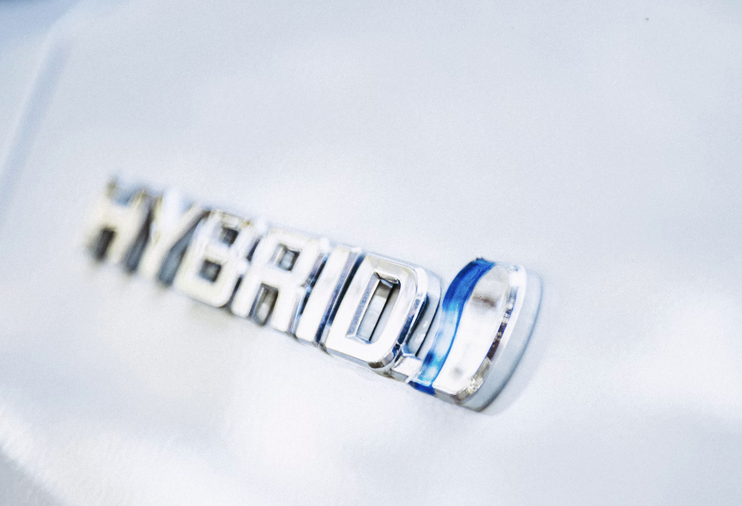While the big story is electric vehicles, Australians are quietly buying hybrids. Hybrid vehicles combine electricity and petrol and are cheaper to buy than EVs. They provide a kind of halfway house between petrol vehicles and EVs. Should you buy a hybrid in 2024?
What are hybrid vehicles?
Hybrid vehicles run on a combination of electricity and petrol. There are two main types:
- Hybrids have a small battery and a petrol engine. You charge the battery using regenerative braking but you can’t plug them in. They run on electricity for short distances, saving fuel in city and suburban driving.
- Plug-in hybrids (PHEVs) have a larger battery and a smaller petrol engine. You charge the battery by plugging it in. They can run in electric-only mode for longer than hybrids and are more fuel efficient.
Hybrid sales in Australia
Sales of new hybrids more than doubled (117%) in the year to 31 March 2024. Making up 12% of total sales, buyers bought 10 times more hybrids than plug-ins.
In Australia, the most popular type of vehicle is SUVs (59%) followed by light commercials (23%). One advantage for hybrids over EVs is the much wider choice of these popular vehicle types. They particularly sell well in medium cars (28%), medium SUVs (22%), small cars (17%) and small SUVs (12%).
Automakers appear to be ready to manufacture more hybrids in line with demand in Australia and overseas.
Hybrids are popular overseas
The trend towards buying hybrids is mirrored in the UK, US and Europe.
In the UK, hybrids and plug-ins together made up more than a fifth of new registrations at March 2024. In the year to March 2024:
- Hybrid sales rose 19.6% (14% share)
- Plug-in sales rose 36.7% (7.7% share)
- EV sales increased 3.8%, (15.2% share).
In Europe, a third of new registrations were hybrids and plug-ins combined. Note, sales of plug-ins fell 7% during 2023 while EVs took a 14.6% share.
Hybrid sales in the US rose 65% in 2023 and their share was 9.1% (EV share was 6.9%).
Intentions to buy a hybrid
One way to predict the future of hybrid sales is to study buying intentions. Roy Morgan’s report on Australian intentions to buy a car found:
- 39% intended to get a petrol vehicle.
- 30% wanted to buy a hybrid of some kind.
- 14% intended to get an EV.
Roy Morgan claims 1.8 million people intend to buy a hybrid or EV in the next 4 years, compared to 1.68 million who would prefer a petrol vehicle.
While buyer intentions are one way to make predictions, they can be unreliable. For example, a respondent may say what they think others will want to hear. Or they may lose their jobs or move house, which affects their ability to buy the car they intended.
There may be good reasons to prefer hybrids.
Good reasons to buy a hybrid
Hybrids in general bridge the gap between a petrol vehicle and an EV. This means they are more familiar, servicing is similar, and there’s no need for range anxiety. Plug-ins are the next step towards EVs because, properly used with electricity, the owner has to find somewhere to charge them.
Cost is a big factor. Hybrids are cheaper to buy than plug-ins and plug-ins are cheaper to buy than EVs. Meanwhile, hybrids have lower running costs than petrol or diesel vehicles and plug-ins have lower running costs than hybrids.
Value per distance travelled is another factor. The latest iSeeCars study (US) predicts hybrids will become the dominant drivetrain. Using data from over 1.3 million 3-year-old used cars, it compared the cost per 1,000 miles driven by petrol, EV, hybrid and plug-in hybrids. The top 10 of all cars for value per miles driven were all hybrids (with one plug-in).
Another factor is doing “the right thing”. Yet how often hybrids or plug-ins run on electricity is still up to the driver. Research shows many use the petrol engine rather than have to find somewhere to plug it in. This means fuel consumption and emissions from plug-ins are typically understated.
It’s worth considering whether a type of hybrid meets your needs.
Does a hybrid meet your needs?
If you live in the city or suburbs, you can save fuel by buying a hybrid. However, you will use mostly petrol on country roads or on the highway.
Some buyers ask whether hybrids use much less fuel than the petrol version. This is generally true but not always a certainty. Check by comparing vehicles here.
Hybrids are more expensive than the petrol versions. For example, the petrol Toyota Rav4 starts at around $40,000 compared to over $58,000 for the hybrid variant. Hybrids (from $30,000) are much cheaper than plug-ins (from $47,000) too. You might want to work out how long it takes to recoup the difference in fuel saved if you buy a hybrid.
Green slips for hybrids or plug-ins
A green slip for a hybrid usually costs the same as its petrol version.
We used the greenslips.com.au Calculator and found a green slip costs the same for a Toyota RAV4 or MG HS, whether hybrid or petrol. We noted a couple of insurers charged slightly more for Toyota Yaris and Mitsubishi Eclipse plug-ins.
Calculate your green slip for a hybrid or conventional vehicle.
Ask us anything about green slips
If you didn’t find the answer to your question, please send it to us and we will answer it as soon as we can.


your opinion matters: